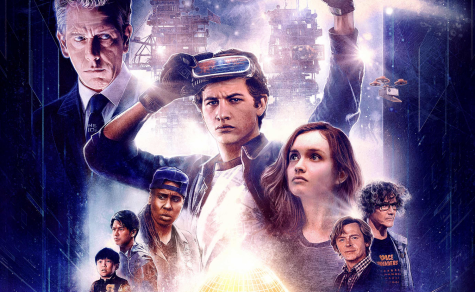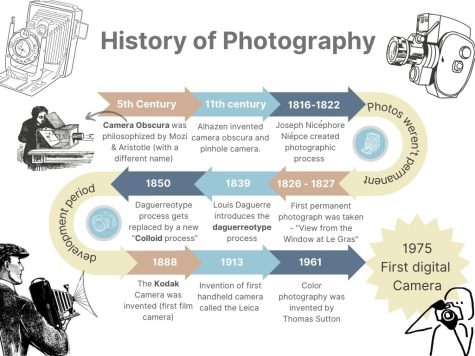The Virtual Reality of “Ready Player One” is closer to reality than one might think

Ready Player One is a newly released movie directed by Steven Spielberg and is based on a 2011 best selling book that features technology depicted in a Sci-Fi setting of a depressed United States where virtual reality is the most desired form of escape. The movie is a thriller that delivers a high-stakes, online contest that mixes puzzles, inside jokes, with video game violence.
The futuristic teens who go up against an evil empire are intended to use technology that is futuristic and will not a reality for decades. And yet, that could not be farther from reality.
The setting of Ready Player One is intended to be science fiction, but it is hardly Sci-Fi. All of the cool gadgets used in the movie already exist and many will be available to the average consumer soon.
Wade Watts is the protagonist of “Ready Player One”. He is a witty and smart and along with his friends, he goes in search for keys in a virtual reality video game, called the Oasis. The goal is to solve a mystery left by the game’s developer that will give them trillions of dollars and unlimited power within the game itself.
This virtual Easter Egg hunt for keys is actually what gaming programers call an “Easter Egg” or by computer software and media, jargon is an “intentional inside joke, prize, key or hidden message or image, or secret feature of a work. It is usually found in a computer program, video game. The name is used to evoke the idea of a traditional Easter egg hunt.”
In the game, players take the role of their own individual avatars, which are virtual characters that they can choose and customize. They control their avatars, much like VR games are controlled now, by running and moving in the real world. Wade can see the game through a headset that has a screen inside of it showing them a first person view of the game through their avatar’s eyes, giving them the illusion of being inside of the game.

You are probably thinking that if people had to walk around the real world to move in a virtual world, furniture, time and other obstacles in the real world would interfere with the game.
This dilemma is a game programer’s conundrum both in the book/movie and in current VR games.
Seeing both real reality and virtual reality is a control movement in current VR (Virtual Reality) video games that you can play right now is still an issue being worked out by game developers.
Some games use joysticks for your thumbs on your hand controllers, (which are used to move your hands and interact inside of the game,) and some use a short distance teleport system by allowing players to point at a spot on the floor and instantly move to it in the game but not in real life.
Both of these methods are used to allow people playing in a small room the ability to move in game without bumping into objects they can’t see in the real world while wearing their headset. However, a new independent company has developed a treadmill that allows players to move around in the real world and virtual world while standing in place.

That new technology is called the Infinadeck and while you can’t buy it yet, it has been under public testing for quite some time and within a few years will be readily available for anyone that can spare the couple hundred dollars.
The deck itself doesn’t take up much more space than a regular treadmill, but is slightly wider and taller to allow plenty of movement space and room for onboard electronic systems.
The Infinadeck takes information from motion sensors on the users feet and waist to measure their center of mass and determine whether they are walking, running, or standing still based on their position.
Infinadeck Features
- 360-degree moving floor allows for true and natural movement
- Active wireless control system instantly reacts to movements
- No harness, special shoes, or hardware required
- Seamlessly Integration with VR software and hardware
- Link multiple units for game play, training, or collaboration
If the user leans forward and starts to move their feet in the same direction, then the deck will move the treadmill underneath them in the exact opposite direction to allow the user to walk in any direction while standing in place.
This allows players to move freely within a virtual space while stationary in the real world.
Technology like this is what enables books and movies like Ready Player One to be so popular.

While virtual reality goggles have been around for a long time, the device most widely considered as the first real head mounted virtual display was created by Ivan Sutherland at MIT in 1968.
However, not until recently has VR imaging technology been easily available for consumer use, and at the level of detail and immersion that is capable now.
Devices such as the Oculus Rift and HTC Vive are much more powerful than any VR headsets that came before them, and are still improving in many ways. When combined with the Infinadeck, people will finally be able to have a full body immersive experience in virtual reality.
The only issues facing the VR market are price. This technology is expensive to develop, and if you want to own an Infinadeck ($500-800, price not yet officially confirmed), and baseline quality VR headset ($300-400 for average models,) you will end up spending a little over a thousand dollars.
This cost does not include the cost of a computer sophisticated enough to handle the technology and memory space needed to run the demanding VR software. The VR industry will continue to follow the trends showcased in Ready Player One regardless of the expense of the best technology.
What is encouraging is that as the technology grows in popularity, the cost of owning VR is will be far lower and more affordable than it has been even though it is still not affordable to many. For now, all we can do is wait and watch.










